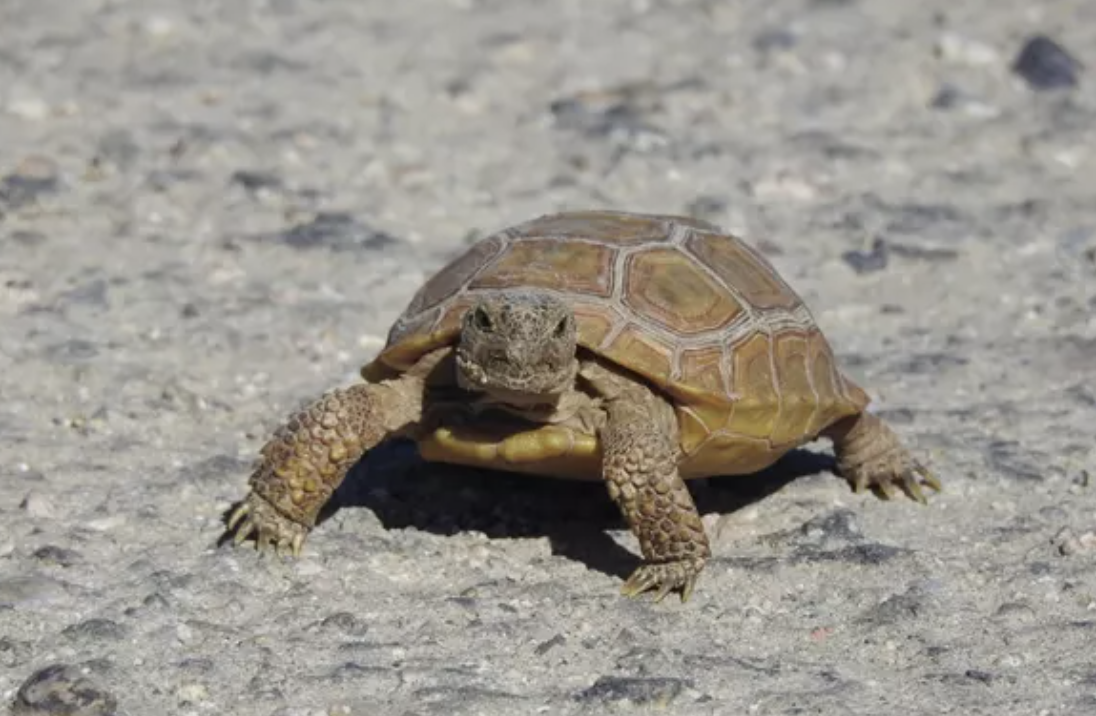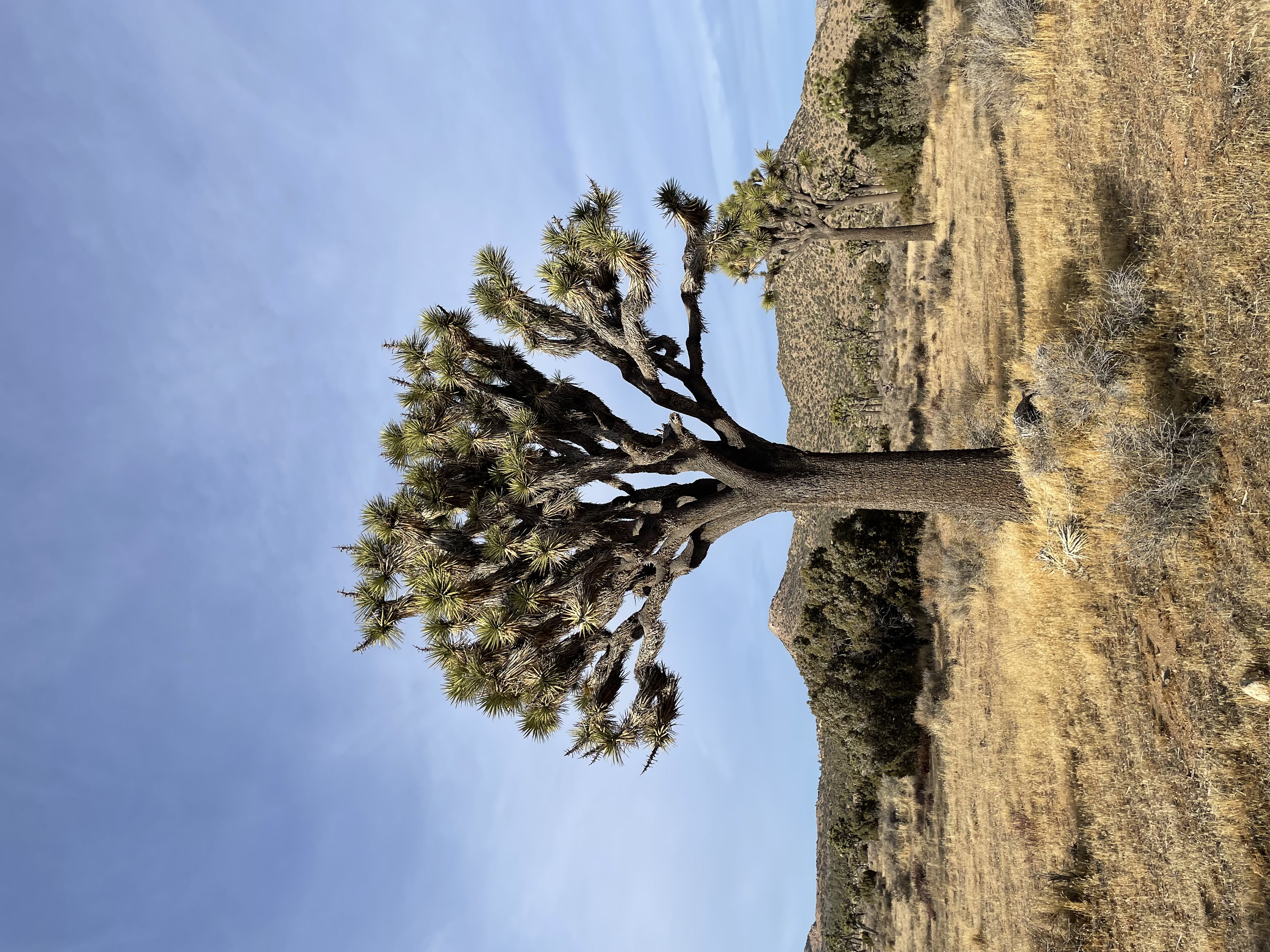Species Conservation
How does the CA-CESU protect plant and animal species as they are increasingly threatened by anthropogenic climate change and environmental disruptions? Conserving wildlife ensures that future generations can enjoy our natural world and the incredible species that we live with. It is important to protect the survival of these species, especially those that are on the verge of extinction. Through species conservation research, the CA-CESU aims to develop strategies that improve the ability of vulnerable species to persist in the future. Learn more about species conservation projects below.

[image caption]
Determining Wildlife Use of Mine Features pre- and post- Remediation in MOJA
Years Active: 2024 - 2029
PI: Rebecca Patterson (Bat Conservation International)
In conjunction with the National Parks Service, Bat Conservation International will survey mines pre- and post- remediation in Mojave National Preserve. The surveys will primarily be to understand the use of wildlife in the mines, particularly the federally threatened Desert Tortoise (Gopherus agassizii), Townsend’s Big-Eared Bat (Corynorhinus townsendii) which is currently listed as a species of special concern within California, and other mine-roosting bats. Presence and activity of wildlife will be documented through mapping, LiDAR scans for certain features, guana sampling, White-Noise surveillance, observations, and other monitoring techniques. The information gathered will help protect wildlife species during mine remediation efforts, further prevent human disturbance, and protect the safety of people who recreationally visit the mines.

[image caption]
Sustaining Joshua Trees in the Mojave in Face of Climate-driven Vulnerabilities
Years Active: 2024-2027
PI: Lynn Sweet (University of California, Riverside)
Several parks within the Mojave Desert Inventory & Monitoring Network (MOJN) contain Western and/or Eastern Joshua tree forests. These species are already experiencing impacts of climate change, including increased intensity of fires, frequency of fires, and mortality. Lowered recruitment, ie. a decrease in the development and survival of saplings over a given time frame, has also been a shift associated with climate change for these species. To better understand these threats and develop management responses, this project will assess climate vulnerability for the two Joshua tree species occurring in five MOJN western parks. The overall goals of this project are to analyze climate change-induced vulnerabilities to Joshua trees, investigate recruitment niche patterns and vulnerabilities, determine demographic trends of Joshua tree populations, and produce fine-scale future suitable habitat models that will inform management plans.
Researchers from UCR will collect field data to assess the status of Joshua tree seedling recruitment across the study area and characterize the vulnerability of this life stage by studying seedling survival and microenvironmental conditions. Additionally, simultaneous demographic surveys with project partners will be conducted. This project will help inform restoration practices using updated information about species persistence under climate change.

[image caption]
Integrating Physiological Measurements and Models to Evaluate Sequoia Vulnerability to Drought, Fire, and Beetle-Driven Mortality in a Changing Climate
Years Active: 2024-2028
PI: Anna Trugman, Leander Anderegg (University of California, Santa Barbara)
Giant sequoias are a species often considered insensitive and invulnerable to climatic and biotic stressors. However, they have shown substantial signs of vulnerability in recent years. Sequoias exhibited significant foliage dieback during the recent drought, and a relatively small number of large sequoias appear to have been killed by bark beetles. These changes are unprecedented, and the situation is further exacerbated by recent catastrophic wildfires, which may have killed nearly a fifth of all of the large sequoias in the species range. Forest management and protection efforts are severely hampered by several information gaps. There is an inadequate understanding of the factors that determine sequoia vulnerability to drought and fire damage, a lack of information on the bark beetle that attacks sequoias, and a lack of suitable modeling tools for sequoia vulnerability.
To address these issues, the University of California, Santa Barbara will partner with NPS researchers in Sequoia and Kings-Canyon National Park (NPS-SEKI) and USGS-SEKI staff to leverage ongoing physiological measurements in giant sequoia groves. The project will address three key areas of concern: sequoia tree hydrology and drought vulnerability, the influence of fire on sequoia drought vulnerability and mortality risk, and the interaction between drought and beetle risk to giant sequoias.

[image caption]
Sierra Nevada red fox: Surveys, Samples, and Genetics
Years Active: 2024 - 2028
PI: Ben Sacks (University of California, Davis)
The Sierra Nevada red fox, or Vulpes vulpes necator, is a rare carnivorous mammal which lives in the alpine and subalpine regions of the Sierra Nevadas. Vulpes vulpes necator’s range also encompasses lower-elevation montane habitats. However due to extensive fur trapping in the 1800s and 1900s, the montane subspecies population became extremely small, and in 2020 the USFWS proposed to list the fox as an endangered species. The Sierra Nevada red fox had not been seen in Sequoia & Kings Canyon National Parks since the 1930s, until in 2022, when a remote camera captured imagery of at least one fox. The confirmation of the Sierra Nevada red fox in this region has prompted a study done in conjunction with University of California, Davis, and Sequoia & Kings Canyon National Park to understand how many individual foxes occur within and around park, and other associated life history traits. This information can better help inform park activities, management planning, and conservation efforts in ways which prioritizes the safety and stability of this fox species’ vulnerable population. This study will be conducted as a combination of CDFW camera surveys, scat collection, and hair snares. The combined sampling and surveying efforts will help provide a clearer understanding of the number of individuals in this area, relatedness to each other and known individuals to the north, and sex ratio.

Bat Population and Disease Monitoring Program
Years Active: 2022-2027
PI: Shannon Rexin (California State University, Sacramento)
Bats face threats from drought, fire, habitat loss, pesticides, wind farms, disease, and invasive species. More recent work at SEKI has focused on overwinter ecology and roost selection, disease monitoring, fire response, and education. Starting in 2016, 9 acoustic recording units (ARUs) were deployed in various fire regimes to evaluate, among other things, bat biodiversity associated with fire. CSU Sacramento and SEKI are working collaboratively to develop a long-term bat monitoring program that includes population and disease metrics. This long-term monitoring program includes acoustic surveys and disease sample processing. Thus far, these projects have led to the purchase of 22 ARUs. The project's remaining objectives are to: 1) distribute ARUs to more recent wildfires and prescribed burns, 2) distribute ARUs to study the biogeography of bats across a larger elevation gradient, in more forest types, and in the subalpine and alpine zones, 3) continue to use one ARU to collect acoustic calls at all mist netting events, and 4) use one ARU to provide a live feed of acoustic calls during public discussions about bat acoustic ecology at mist netting events.

Protecting Wildlife Using New, Cost-Effective Methods
Years Active: 2019-2024
PI: Dr. Myra Finkelstein (University of California, Santa Cruz)
California condors once ranged over much of the Pacific West. In 1982, only 22 condors remained in the world and by 1987 the last remaining wild bird was taken into the San Diego Zoo for a captive-breeding program to save the species. Since that time, the captive-breeding program has been a success, though the wild-release programs encounter challenges. Primary among anthropogenic-associated mortality is lead poisoning. For California condors, incidental ingestion of lead ammunition fragments from shot carcasses is their primary source of lead poisoning and a significant barrier to their population recovery. While progress has been made to improve understanding of the benefits of non-lead ammunition among hunters and ranchers of the region, it is clear that lead exposures in the condor flock remains a significant management issue for years to come.
Pinnacles National Park is a historic breeding area for California condors. Condors continued to be observed at Pinnacles well into the late 1970’s and early 1980’s, up until the last birds were taken from the wild into the captive breeding program. UCSC ecotoxicology laboratory will establish the use of additional biomarkers (e.g., feather, bone) to aid in the ability to assess lead exposure status and diagnose lead-related mortality events in California condors. The laboratory will conduct analyses to measure levels of lead in a range of body tissues with different lead turnover rates (bone, feathers, liver, and blood) to estimate past, current and future lead poisoning rates and risk factors for California condors. Tissue samples will be processed and analyzed using techniques established in the UCSC lab.

Managing the Barred Owl and California Spotted Owl
Years Active: 2022-2027
PI: Dr. M. Zachariah Peery
California spotted owls, endemic to the Sierra Nevada and mountains of coastal southern California from Monterey County south, have declined in abundance and distribution in recent years. In 2015, the California spotted owl was petitioned for listing under the Endangered Species Act. This project uses non-invasive sophisticated technology to monitor presence of barred owls and California spotted owls in Yosemite. Yosemite biologists will use the information to design management responses that are aimed at protecting California spotted owls by controlling the spread of barred owls. We will place Acoustic Recroding Units in existing California spotted owl habitats that are accessible yet provide adequate spatial coverage across the park.
